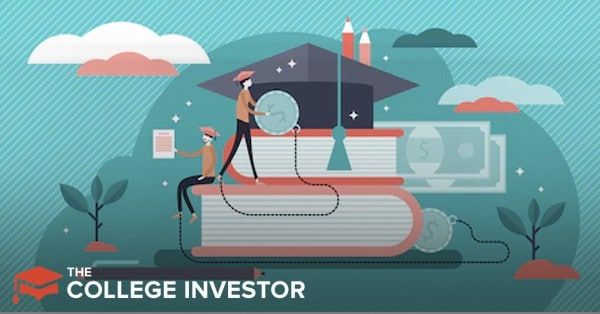
The Federal Perkins Loan Program is a subsidized student loan program.
The program stopped funding loans in 2018, but you may still have a Perkins Loan on the books.
In this guide we explain how to handle a Perkins Loan.
What Is a Perkins Loan?
Perkins Loans are federally subsidized loans issued by a school. Since the loans are subsidized, interest on the Perkins Loan doesn’t start to accrue until you’ve begun repayment. Once repayment starts, Perkins Loans have a fixed interest rate of 5% and a 10-year repayment schedule.
Unlike most Federal loans, Perkins Loans weren’t issued directly by the government. Instead, undergraduate and graduate schools could issue low-interest Perkins Loans to individuals who had extraordinary financial need. The maximum lifetime borrowing amount for Perkins Loans was $27,500 for undergrad loans and a total of $60,000 for graduate loans (including undergraduate loans).
The last disbursements for Perkins Loans was June 30th, 2018, so students haven’t taken out new Perkins Loans in over a year. However, the existing Perkins Loans still need to be repaid.
Perkins Loans have different options for loan discharge and forgiveness compared to other Federal loan programs. Because of that, when you make a plan to pay off your student loan debt, it’s important to understand whether you have a Perkins Loan. We explain the nuances of Perkins Loan forgiveness below.
How to Determine Whether You Have a Perkins Loan
Unlike other Federal loans, Perkins Loans were distributed directly by a school, so you may simply remember that you have a Perkins Loan.
Of course, that could have been several years ago when you weren’t paying attention to your finances. If that’s the case, you can contact a Federal student loan servicer to determine the type of loan you have. The Department of Education’s website also mentions that you can contact your school’s financial aid department to ask whether a loan was a Perkins Loan.
Options for Perkins Loan Forgiveness
Unlike most other Federal loans, Perkins Loans are not eligible for income-driven repayment plans unless they are consolidated with other Federal loans.
But don’t run to consolidate your Perkins Loan just yet. Perkins Loans have better forgiveness options than most other Federal student loans. Rather than having to wait 10 years for loan forgiveness (as in Public Service Loan Forgiveness), Perkins Loans are cancelled bit by bit over a 5-year period.
However, Perkins Loan forgiveness (called cancellation) is only for people with eligible professions.
The following professions qualify for five-year Perkins Loan forgiveness: elementary or secondary education teacher, Head Start preschool teacher, military service in a hostile fire zone (starting after August 30th, 2008), employee at a child or family services agency, faculty member at a tribal college or university, firefighter, law enforcement officer, school librarian, nurse or medical technician, professional provider of early intervention (disability) services, public defender, and speech pathologist.
For the professions listed above, the cancellation schedule is in this chart:
Year | Percentage of Loans Cancelled | Remaining Balance ($60,000 Loans) |
|---|---|---|
Year 1 | 15% | $51,000 |
Year 2 | 15% | $42,000 |
Year 3 | 20% | $30,000 |
Year 4 | 20% | $18,000 |
Year 5 | 30% | $0 |
To learn about the loan forgiveness program, you must contact your school, or the school’s loan provider directly. The loan provider will give you more information about certifying your employment. Be sure to stay on top of certifying your employment, so you don’t miss out on loan cancellation along the way.
Professions with Unique Forgiveness Rules
This wouldn’t be a federal program if there weren’t a few exceptions. If you’re a member of AmeriCorps VISTA or a Peace Corps volunteer, you receive 15% forgiveness for two years. After that, the government forgives 20% of the original balance in years three and four. That means you’ll qualify for up to 70% forgiveness.
Preschool teachers who aren’t part of Head Start qualify for 15% forgiveness per year for five years followed by 10% forgiveness in years six and seven. The result is total loan forgiveness over seven years rather than five years.
Are There Other Ways to Discharge the Loans?
Perkins Loans are discharged if you die, your school closed down, or if you become totally disabled. In some cases, the loans may be discharged in bankruptcy.
You can learn more on the Department of Education website.
Is the Forgiven Amount Taxable?
The amount of debt forgiven under the Perkins Loan forgiveness plan is not taxable!
What If I Don’t Qualify for Loan Forgiveness?
If you don’t qualify for Perkins Loan forgiveness, your loan is set to a 10-year repayment schedule. You cannot put a Perkins Loan onto an income-driven repayment plan unless you consolidate the loan.
So should you consolidate your Perkins Loan? If there’s any chance that you may work in a qualified profession, you should try to make the payments as agreed. That way, if you start a new profession, you may start cancelling your debt within the year.
But, if you cannot swing the payments, consolidate the loan so you can put the Perkins Loans on an income-driven repayment plan.
And, of course, you can always refinance a Perkins Loan to a private student loan. But that means you give up the advantages of a Federal student loan including the ability to cancel the loan.

Robert Farrington is America’s Millennial Money Expert® and America’s Student Loan Debt Expert™, and the founder of The College Investor, a personal finance site dedicated to helping millennials escape student loan debt to start investing and building wealth for the future. You can learn more about him on the About Page or on his personal site RobertFarrington.com.
He regularly writes about investing, student loan debt, and general personal finance topics geared toward anyone wanting to earn more, get out of debt, and start building wealth for the future.
He has been quoted in major publications, including the New York Times, Wall Street Journal, Washington Post, ABC, NBC, Today, and more. He is also a regular contributor to Forbes.
Editor: Clint Proctor Reviewed by: Chris Muller
